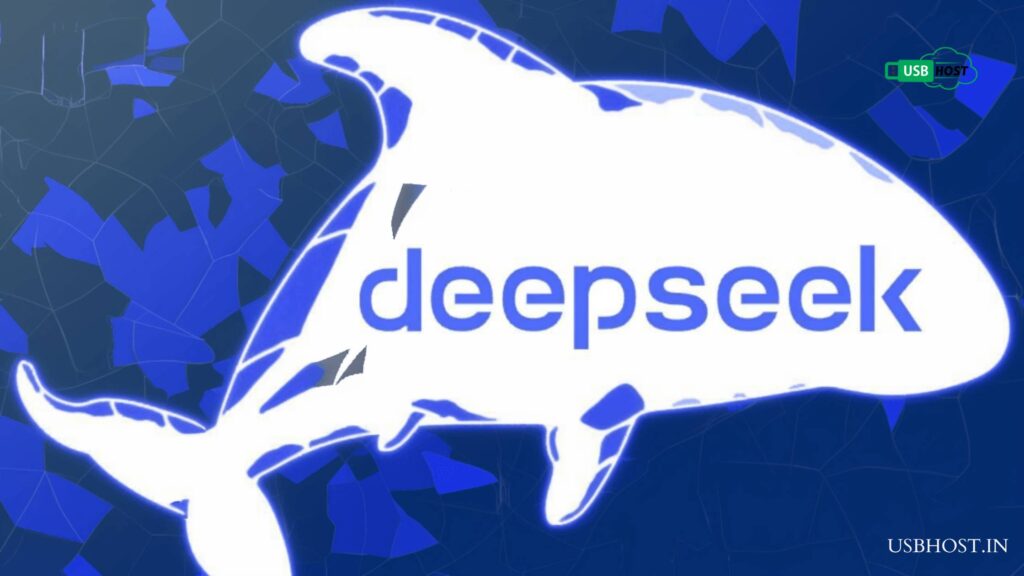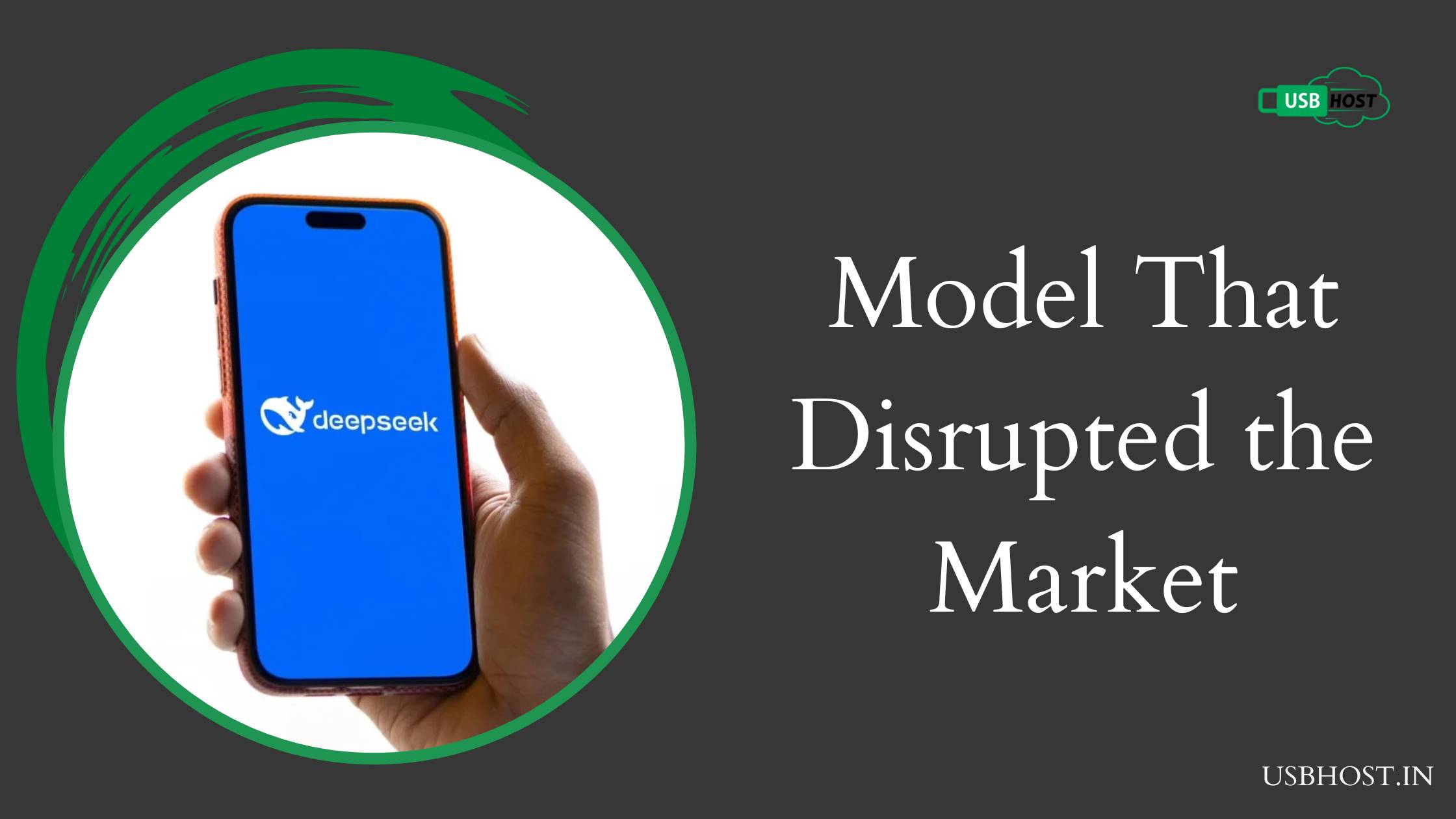DeepSeek, the model that shook the market, is leading a new era of innovation. Find out why it’s making waves.
DeepSeek has taken the AI landscape by storm, disrupting the market with its groundbreaking capabilities. This model redefines performance, outpacing competitors in efficiency, accuracy, and adaptability. From language understanding to complex problem-solving, DeepSeek has set new industry benchmarks, making it a game-changer for businesses and developers alike. Its innovative architecture and cost-effectiveness have led to widespread adoption, shaking up traditional AI powerhouses. But what makes DeepSeek so revolutionary? In this blog, we dive deep into its features, impact, and why it’s being hailed as the future of artificial intelligence. Stay ahead in the AI race with DeepSeek!

Story
Until recently, it was widely believed that building a foundational AI model like ChatGPT required massive computing power. “Compute” might sound complex, but it simply refers to computers—specifically, highly specialized chips designed for AI training. These chips optimize the learning process, enabling AI models to improve over time. While compute remains essential, advancements in efficiency are changing the game, making AI development more accessible. The landscape is evolving, allowing for more innovation with fewer resources. In short, AI no longer demands extreme computing power, but smart optimization remains key to training powerful models.
AI models, like humans, require training, and this training happens on powerful, expensive computers. “Compute” isn’t free—it costs billions. Since only a few companies manufacture these specialized chips, with Nvidia leading the market, many assumed that only well-funded players could develop foundational AI models. Limited chip supply created barriers, making it difficult for newcomers to compete. However, DeepSeek defied these expectations, proving that innovation isn’t solely about money or access. Their breakthrough challenges the notion that AI development is restricted to industry giants, opening new possibilities for the future of AI models and their accessibility.
DeepSeek is a foundational AI model from China that exceeded all expectations. While China has the talent and financial resources to build such models, access to specialized AI chips, or “compute,” was a major hurdle. The U.S. government restricted Nvidia from exporting its most advanced chips to China, limiting researchers to pre-existing supplies or what they could find elsewhere. Many believed large-scale AI development would be impossible under these constraints. Yet, despite these challenges, DeepSeek proved that innovation can thrive even with limited resources, reshaping assumptions about China’s AI capabilities and the future of foundational models.
Last week, DeepSeek released an AI model that rivals some of the best from the U.S.—but at a fraction of the cost. They claim their entire training process cost just $6 million. Even factoring in salaries and overhead, their approach remains incredibly efficient. In contrast, U.S. companies have poured billions into building similar models. This breakthrough challenges the assumption that massive budgets are necessary for AI innovation. DeepSeek’s success proves that strategic resource management can yield high-quality results, reshaping the AI landscape and forcing industry leaders to rethink how foundational models are developed and scaled.
DeepSeek challenges several major assumptions in AI development:
- Perhaps vast computing power isn’t essential to train an advanced AI model.
- Maybe building and training an AI model doesn’t require a massive budget.
- Tech giants like OpenAI, Microsoft, Google, and Amazon may have been overspending on AI development—an unwelcome revelation.
- Reduced demand for high-end chips could impact Nvidia’s future sales, posing a significant business concern.
This breakthrough redefines how AI models can be built efficiently, forcing the industry to rethink the traditional belief that more money and compute always lead to better results.
This could explain the recent tech stock downturn—DeepSeek’s success might set a new industry precedent.
But that’s just one perspective.
Let’s take a deeper look.
China has managed to develop a foundational AI model at a fraction of the usual cost. Impressive! But if that’s possible, why haven’t well-funded giants followed suit? What’s stopping companies with deep pockets from adopting the same strategy, slashing expenses, and maximizing profits while continuously improving their models? If efficiency is the new game-changer, the AI race might be shifting in ways no one anticipated.
Tech giants like Microsoft, Google, and OpenAI could adopt DeepSeek’s cost-effective approach—and they likely will. But here’s the game-changer: DeepSeek is open source. Anyone can access, modify, and deploy it, leveling the playing field. Unlike U.S. companies that have been cautious about fully opening their models, DeepSeek is freely available and impressively powerful. This shifts the competition entirely. The U.S. isn’t just up against one AI model; it’s contending with an evolving, community-driven model where contributions can enhance its capabilities over time.
So, where does this leave tech giants? Their competitive advantage is now in question, a concern that investors must seriously consider.
However, not everything about DeepSeek’s story is crystal clear. The claim that it was trained with limited compute and resources remains just that—a claim. Researchers and academics are already scrutinizing the model, analyzing papers, and attempting to replicate the process. If the cost-efficiency turns out to be as remarkable as advertised, it could shake up the AI industry even further. In the coming weeks or months, we’ll likely find out whether DeepSeek’s success is truly revolutionary or if there’s more to the story than meets the eye.
Even if we accept the $6 million training cost, there’s an important distinction. This likely reflects the cost of renting the chips, not the chips themselves. The paper provides insights into this breakdown, highlighting that the expenses tied to chip usage may not be as high as initially thought.
If we assume renting a chip costs $2 per hour, the total cost would amount to $5.57 million. However, this isn’t the actual cost of the chips themselves. It also excludes essential factors like experimentation, prior research, salaries, and other overheads. So, the $6 million figure is misleading—it likely represents just a portion of the total investment, and the actual cost to build DeepSeek is probably much higher.
Now, let’s address another frequently asked question: Why didn’t India create its own DeepSeek? The best explanation comes from a tweet by @bookwormengr. To paraphrase the idea: Protectionism plays a key role. India is an open market where U.S. companies can offer their AI services, often outperforming any local startups in both quality and price. In contrast, China is a protected market. U.S. companies don’t have free access, which forces consumers to adopt Chinese alternatives, even if they aren’t initially the best. This creates a strong incentive for Chinese researchers to invest in AI development, knowing they have a guaranteed market.
India, however, lacks this advantage. Without the protectionism that shields local competitors, Indian researchers face a significant challenge. They must navigate a market flooded with global players and compete on a much tighter budget. This lack of market protection means researchers in India must overcome additional hurdles, making it harder to build foundational models like DeepSeek without the same incentives available to their Chinese counterparts.
Can India create its own DeepSeek? The answer depends on various factors. While India has immense talent and potential, the market dynamics, lack of protectionism, and competition from global giants create significant challenges. Without the same incentives or barriers as in China, Indian researchers would need to find innovative ways to break through. The question remains: Can India overcome these hurdles and build a competitive AI model on its own? The future will tell.
For more information on emerging technologies and their implications, visit usbhost.in, your premier destination for web hosting solutions tailored for the modern age.
“Start Hosting Today!” – Encourages visitors to take immediate action and sign up for hosting services.
Follow for more updates (click here)






